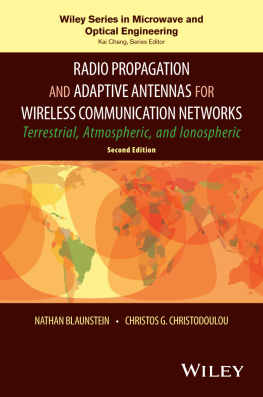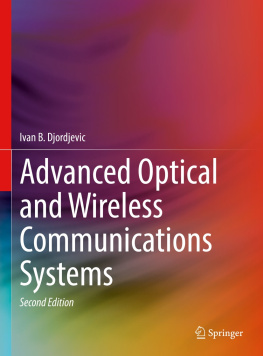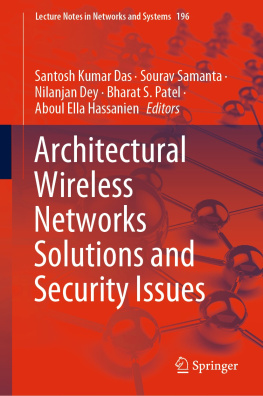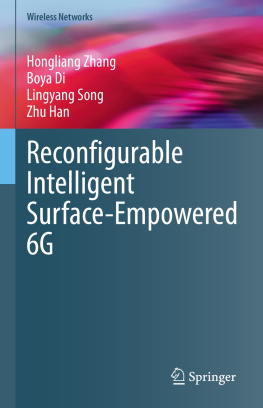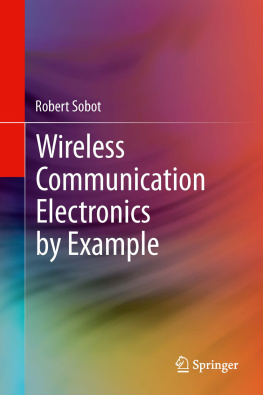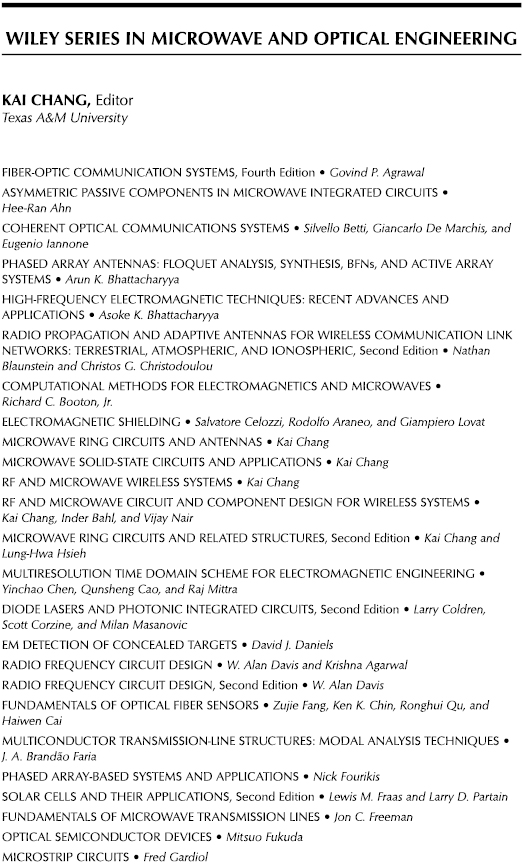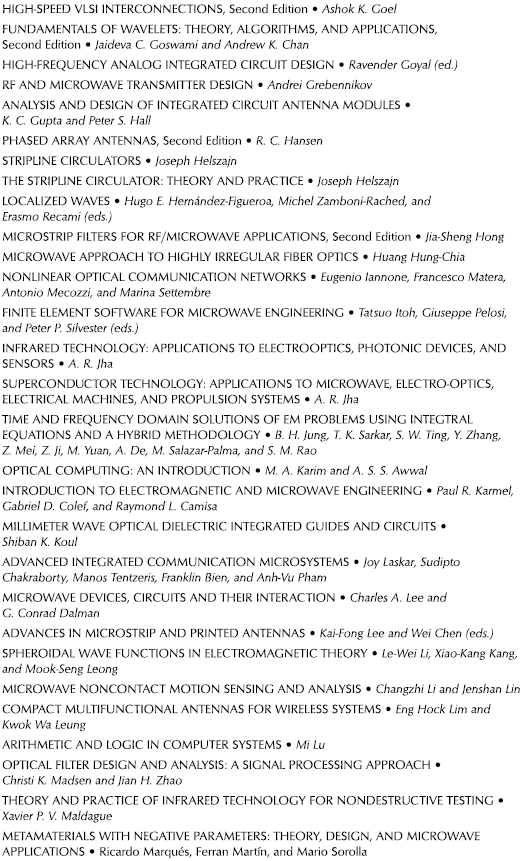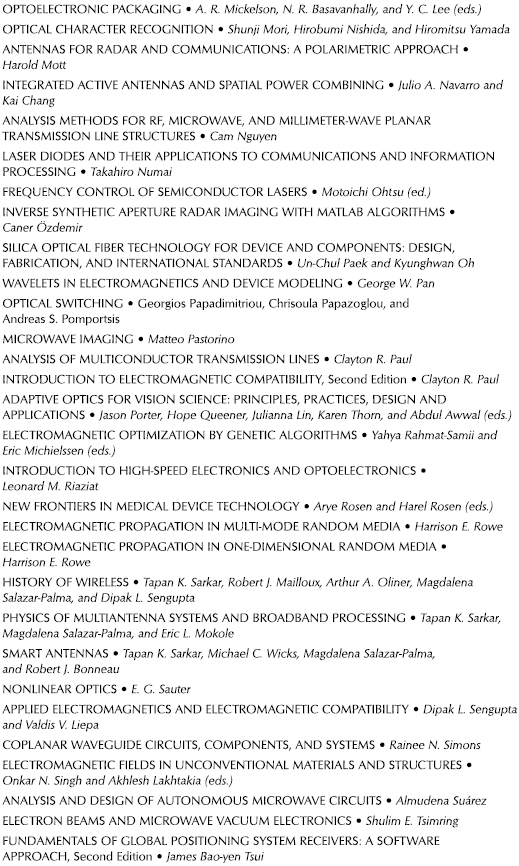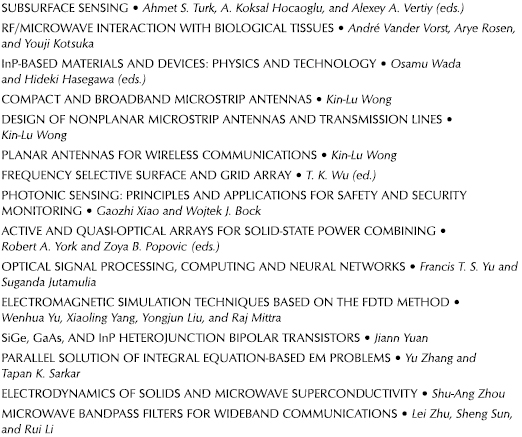Nathan Blaunstein - Radio Propagation and Adaptive Antennas for Wireless Communication Networks
Here you can read online Nathan Blaunstein - Radio Propagation and Adaptive Antennas for Wireless Communication Networks full text of the book (entire story) in english for free. Download pdf and epub, get meaning, cover and reviews about this ebook. year: 2014, publisher: Wiley, genre: Home and family. Description of the work, (preface) as well as reviews are available. Best literature library LitArk.com created for fans of good reading and offers a wide selection of genres:
Romance novel
Science fiction
Adventure
Detective
Science
History
Home and family
Prose
Art
Politics
Computer
Non-fiction
Religion
Business
Children
Humor
Choose a favorite category and find really read worthwhile books. Enjoy immersion in the world of imagination, feel the emotions of the characters or learn something new for yourself, make an fascinating discovery.
- Book:Radio Propagation and Adaptive Antennas for Wireless Communication Networks
- Author:
- Publisher:Wiley
- Genre:
- Year:2014
- Rating:5 / 5
- Favourites:Add to favourites
- Your mark:
Radio Propagation and Adaptive Antennas for Wireless Communication Networks: summary, description and annotation
We offer to read an annotation, description, summary or preface (depends on what the author of the book "Radio Propagation and Adaptive Antennas for Wireless Communication Networks" wrote himself). If you haven't found the necessary information about the book — write in the comments, we will try to find it.
Radio Propagation and Adaptive Antennas for Wireless Communication Networks, 2nd Edition, presents a comprehensive overview of wireless communication system design, including the latest updates to considerations of over-the-terrain, atmospheric, and ionospheric communication channels. New features include the latest experimentally-verified stochastic approach, based on several multi-parametric models; all-new chapters on wireless network fundamentals, advanced technologies, and current and modern multiple access networks; and helpful problem sets at the conclusion of each chapter to enhance clarity. The volumes emphasis remains on a thorough examination of the role of obstructions on the corresponding propagation phenomena that influence the transmission of radio signals through line-of-sight (LOS) and non-line-of-sight (NLOS) propagation conditions along the radio path between the transmitter and the receiver antennasand how adaptive antennas, used at the link terminals, can be used to minimize the deleterious effects of such obstructions. With its focus on 3G, 4G, MIMO, and the latest wireless technologies, Radio Propagation and Adaptive Antennas for Wireless Communication Networks represents an invaluable resource to topics critical to the design of contemporary wireless communication systems.
- Explores novel wireless networks beyond 3G, and advanced 4G technologies, such as MIMO, via propagation phenomena and the fundamentals of adapted antenna usage.
- Explains how adaptive antennas can improve GoS and QoS for any wireless channel, with specific examples and applications in land, aircraft and satellite communications.
- Introduces new stochastic approach based on several multi-parametric models describing various terrestrial scenarios, which have been experimentally verified in different environmental conditions
- New chapters on fundamentals of wireless networks, cellular and non-cellular, multiple access networks, new applications of adaptive antennas for positioning, and localization of subscribers
- Includes the addition of problem sets at the end of chapters describing fundamental aspects of wireless communication and antennas.
Nathan Blaunstein: author's other books
Who wrote Radio Propagation and Adaptive Antennas for Wireless Communication Networks? Find out the surname, the name of the author of the book and a list of all author's works by series.

